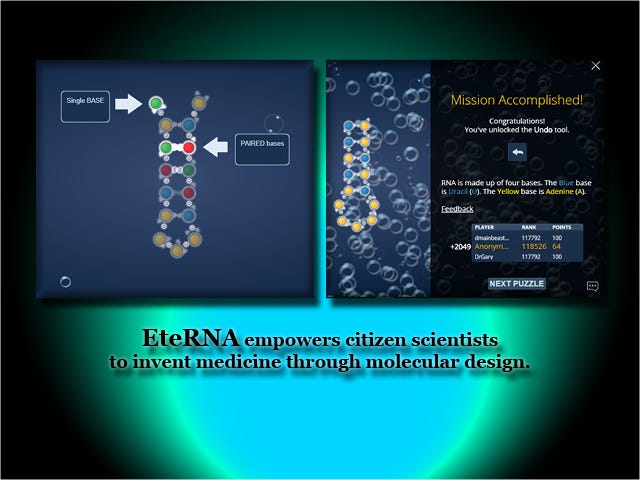EteRNA: The Game Turning Players into Molecular Biologists
Written on
Introduction to EteRNA
EteRNA is a remarkable browser-based game with the potential to impact the world positively. The tagline encapsulates its mission: EteRNA is a game with a meaningful objective.
This innovative science game utilizes video game programming to create precise models of unfolded RNA molecules and their nucleotides. Its design revolves around harnessing human problem-solving abilities to supplement traditional supercomputer algorithms, thereby accelerating the discovery of effective solutions to intricate biomedical challenges.
The initiative began as a collaboration between researchers at Carnegie Mellon University and Stanford University, who sought to overcome significant obstacles in understanding RNA folding sequences. Backed by the Bill and Melinda Gates Foundation, Stanford University, and the National Institutes of Health, EteRNA has gained traction by leveraging the collective intelligence of non-experts.
The developers set boundaries based on established molecular biology and genetic science rules, hoping that crowdsourcing these challenges would yield results. Interestingly, they initially focused on creating a scientifically accurate game without considering its entertainment value. They released it online without expectations of widespread engagement.
The game quickly gained popularity, attracting hundreds of thousands of players who communicated through in-game chats and community forums. Players educated one another and independently learned molecular biology concepts to succeed in the game.
A diverse group of participants, including lawyers, retail employees, and high school students, collaborated globally to decode RNA sequences that had stumped scientists. While a supercomputer took considerable time to solve RNA design challenges using six different algorithms, the citizen scientists of EteRNA achieved the same results for 100 challenges in less time.
The success of this initial launch led to a landmark achievement: the first paper co-authored by a non-expert citizen scientist was published in a peer-reviewed journal. The game’s design allowed it to share innovative solutions directly with a Stanford biomedical research team. The developers have consistently advocated for the ingenuity of non-scientists, asserting that their creativity is unbound by preconceived notions of correct answers.
Color coding within the game represents individual nucleotides (adenine, cytosine, guanosine, and uracil) that form RNA pairings. Each nucleotide emits a unique sound, with harmonious pairings creating an enjoyable auditory experience.

The educational potential of EteRNA is immense, warranting its presence on every public high school computer in America. The manipulation of RNA nucleotide sequences significantly influences the strand's free energy, which in turn affects its folding characteristics. Players' strategies have led to the identification of essential features that lab scientists have recognized as complicating inverse RNA folding.
EteRNA transforms creative intelligence into computational power, tackling some of molecular biology's most complex challenges.

The application of this tool in biology education could enhance public investment returns in education and assist researchers with the intricacies of scientific analysis. Given the focus on STEM in education, it's surprising that such a valuable resource remains underutilized.
While the potential benefits of this innovative concept are substantial, the true value lies in the approximately 250,000 registered community members. These dedicated players are channeling their enthusiasm into noble initiatives, including:
- OpenVaccine: Harnessing EteRNA to create a stable vaccine for Coronavirus.
- OpenTB: Addressing challenges to identify disease-related RNA signatures.
- OpenCRISPR: Utilizing EteRNA to develop stable controls for CRISPR gene-editing technology.
These examples highlight the ongoing work of EteRNA, and the idea itself is so ingenious that it could pave the way for a new era of educational and scientific collaboration between mentors and learners.
Could similar concepts work for games addressing chemistry or engineering challenges? Only time will tell. Meanwhile, visit EteRNA, sign up, and join the effort to advance scientific knowledge. Share this with anyone who might benefit from exploring RNA modeling.
Thank you for reading! Feel free to leave a comment to let me know you stopped by.